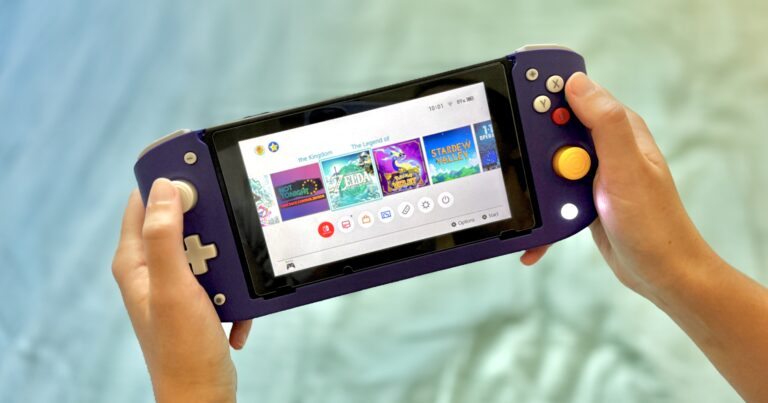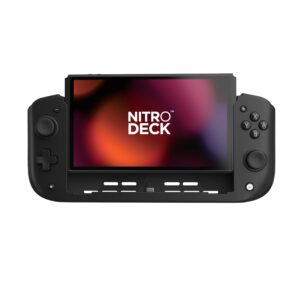A literal game-changer.
Nitro Deck handheld Switch dock review: Better late than never
I’ve had my Nintendo Switch for close to five years now. It’s still one of my favourite purchases of all time, but it has one big fault: the Joy-Cons suck. Sure, they were fine for the first few months, but after the dreaded Joy-Con drift set in, even a trip to Nintendo’s repair facility wasn’t enough to cure them of their troubles. As a result, I’ve pretty much only been able to play my Switch docked with a Pro Controller. This is fine, but it just kind of defeats the purpose of having a hybrid console, right?
Now, we’re less than a year away from the expected release of the next-generation Switch (a.k.a. Switch 2), and Crkd has just gone and dropped my dream Switch accessory - the Nitro Deck handheld dock. The only problem? It’s a few years too late.

How much does the Nitro Deck cost in Australia?
The basic Nitro Deck, which comes in black or white, retails for $99.95. For an additional $50, you can get a Limited Edition Nitro Deck, which comes in more colourways, including the retro, Game Cube-inspired purple version that I tested. For your money, the Limited Edition also gets you a carry case, USB-C to USB-A cable (for when you want to use it as a wired controller while your Switch is docked), and two swappable thumbstick toppers. Functionally, however, both the standard Nitro Deck and the Limited Edition Nitro Deck are the same, and both are compatible with the Nintendo Switch and the Switch OLED.
Nitro Deck design, features and performance
There’s no getting around it—the Nitro Deck is a big boi. It weighs 272 grams, which is almost three times the weight of the standard Joy-Cons. That said, the weight is pretty evenly distributed, so it feels a lot more lightweight than it looks and, thanks to its ergonomic handgrips, it’s still comfortable to play for hours at a time. The joysticks are considerably taller than those on the Joy-Cons, which isn’t necessarily a bad thing but does take a little getting used to.
In terms of features, the Nitro Deck rumbles, it has a gyroscope, and it even has a kickstand (albeit a much better one than the one that comes with the standard Switch). Essentially, it does everything your run-of-the-mill Joy-Cons do, with the exception of Amiibo support. It’s also a cinch to set up—simply enable Pro Controller Wired Communication in your Switch’s settings, then pop your Switch in the Nitro Deck and you’re good to go.
Third-party controller alternatives for handheld Switch play aren’t new, but what sets the Nitro Deck apart is the fact that it connects to the Switch via USB-C (resulting in significantly lower latency than its wireless competitors) and uses drift-resistant Hall Effect joysticks. For the uninitiated, Hall Effect joysticks use magnets to detect movement, while traditional joysticks rely on a carbon pad that wears away over time, causing drift. These features make for a much more enjoyable and responsive gaming experience, especially if, like me, you’ve been battling drifty Joy-Cons for years.
Another feature unique to the Nitro Deck is its four rear programmable buttons, which allow for so much flexibility, especially since you can remap any awkward game controls to an easier location. They can also be turned off completely if you don’t want to use them at all or find them getting in the way.
The Nitro Deck can be used on its own as a separate controller, but unless you were desperate, I’m not sure why you would. It’s ergonomic when attached to the Switch, sure, but it feels unwieldy when not.
Is the Nitro Deck worth buying?
The time I’ve spent with the Nitro Deck has me resenting all those years I spent without it. Its only major flaw is that it didn’t come out sooner. And even though the Switch 2 is set to be announced within the next year, I still think the Nitro Deck is a solid buy for avid Switch gamers, especially considering its budget-friendly price.
Nitro Deck FAQ
Related Articles






